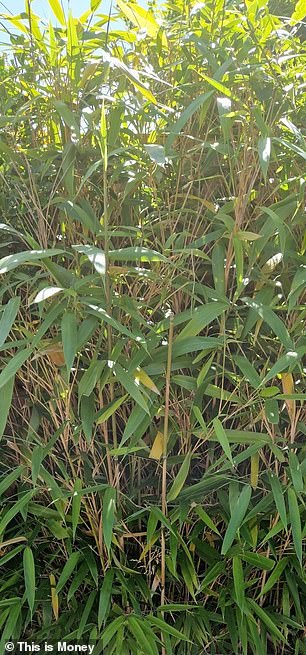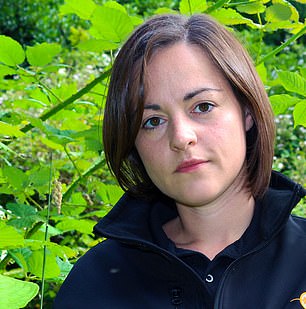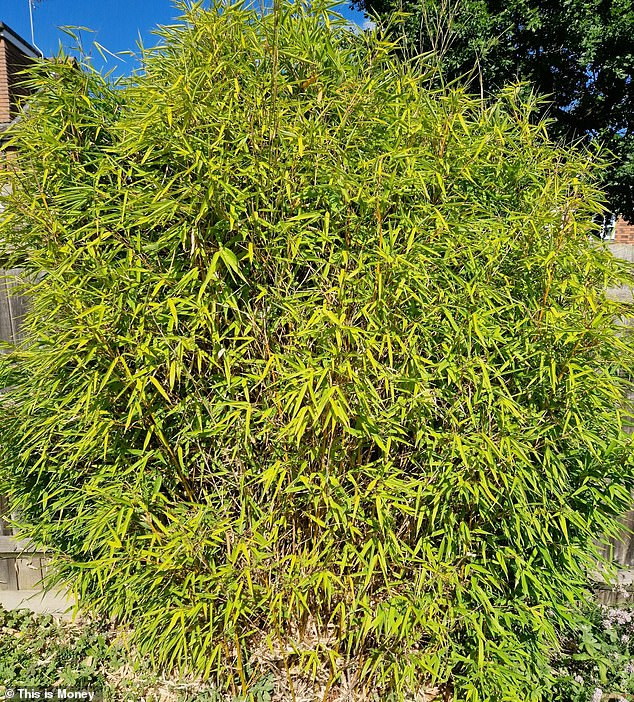We bought our current house eight years ago. On either side of the garden there is bamboo, planted by the previous owners.
We are not experts, but it appears to be two different types, one is near our greenhouse and the other is towards the back of the garden near the shed office.
Lately, I’ve noticed the odd sprout a good distance away from the plant emerging through the grass.
Should we be concerned about either type of bamboo? We would love to get rid of it, but we are not sure how much it will cost or who we should contact to do so.
Could it also be a problem if we put our house up for sale? Via email
What to do with bamboo: This is one of the plants in my garden. I’m not sure if I should worry about it.
Jane Denton answers: Bamboos are a group of woody plants in the grass family. Although they are grasses, some bamboos are so large that they look like trees.
Bamboo is versatile and durable and can be used to create stunning architectural structures, as demonstrated by the Bali Green School Arch.
However, for homeowners and gardeners, bamboo can cause a number of problems.
The Royal Horticultural Society describes bamboo as “vigorous and fast-growing.” Some varieties can grow up to one metre per day.
If left unchecked, bamboo can grow meters tall, become invasive and spread beyond its boundaries.
The photos you provided are striking and you are right in considering the impact of bamboo on your garden and property.
There is also a significant risk that bamboo can not only damage your property and that of your neighbor, but can also significantly affect the value of your home and make it difficult to sell. That is why it is advisable to act as soon as possible.
We spoke to two invasive plant experts and a real estate agent to determine the best course of action.

Another variety: This is the other bamboo in our garden.
Emily Grant, Director of Environet, says: There are around 350 varieties of bamboo growing in the UK, which can generally be classified into two growth habits: running and clump.
Trailing bamboos have a much greater propensity to spread and can cause serious problems for homeowners by sending out long lateral stolons below the soil that emerge unwanted in new locations.
It’s hard to be sure from the photographs alone, but one of the two varieties you have appears to be golden bamboo, phyllostachys aurea, which is a trailing variety and we often see it spreading beyond its original planting area.
The second species could be the arrow bamboo, pseudosasa japonica, which is less vigorous but still known to spread.
Since both plants are located on boundaries and one has already begun to spread, there is a high risk of invasion.
If left uncontrolled, they are likely to invade adjacent properties over time, which may have already happened.
Allowing bamboo to spread onto neighboring lands can result in private nuisance liability, meaning there could be grounds for a lawsuit against you if you do not take appropriate steps to address the encroachment problem.
By keeping bamboo runners in the ground, you also risk damaging your own property, as runners spread in all directions and can easily overtake patios, grow across lawns and decks, invade flower borders, and even grow into the building itself.

Knowledge: Emily Grant, Invasive Plant Specialist
A professional bamboo survey would determine the extent of the problem, assess the risk of invasion, and recommend a plan to address the problem.
A complete excavation of the bamboo would be the quickest and most effective way to proceed, and due to the speed at which it can spread, it is best to act as soon as possible.
If you wish to keep the plants, perhaps for protection purposes, they can be contained within a bamboo-proof root barrier or dug up and placed in sturdy pots; and they should be watched carefully.
An expert bamboo survey costs around £300 and excavation work is typically around £3,500 plus VAT.
Unlike Japanese grass, there is no requirement to declare bamboo on your property when you decide to sell it, but it may show up on a property survey that recommends further investigation.
This appears to be happening more frequently as awareness of the risks increases.
Marc von Grundherr, director of the Benham and Reeves estate agency, says: Bamboo has traditionally been a popular method of providing natural privacy to gardens, but there are several invasive types that can spread quickly and be difficult to control, let alone maintain.
In fact, they can extend up to 30 feet underground, as well as cross boundaries, which can cause problems with neighbors.
Although it is now compared to the famous Japanese grass, there are currently no controls on bamboo and, unlike Japanese grass, its presence does not need to be declared when selling.
However, home buyers are getting smarter and there is no doubt that this is becoming a modern deterrent.
In terms of selling, you really want to avoid anything that could affect the integrity of your property or any neighboring properties.
Invasive bamboo species are known to grow through masonry, as well as damaging drains, patios and cavity walls, so they certainly fall into this category.
It can be tricky to remove and can cost up to £3500 plus VAT, so if it is not removed there is no doubt that any potential buyer may want to factor this potential cost into their offer.
However, if you have a serious bamboo problem, it will likely cost you much more, and inspectors will likely inform potential buyers about the presence of uncontrollable invasive bamboo.
Japanese grass is thought to affect property prices by around 15 per cent and, given that invasive bamboo causes similar problems, that represents a reduction in value of more than £40,000 on the average current house price.
Ethan Lees, an expert at Surrey Bamboo Removal, says: The larger bamboo plant resembles golden bamboo, while the smaller plant resembles arrow bamboo.
Golden bamboo is a problem because it is classified as a “running” type of bamboo. Arrow bamboo tends to clump more.

Expert: Ethan Lees, Bamboo Expert
Unfortunately, despite being a popular choice due to its characteristics, bush bamboo can be very invasive in its preferred conditions.
We have seen some of our worst invasion problems with clumping type bamboo. We tend to find that it takes about 12 to 15 years before it decides to move somewhere else.
The fact that you’ve seen shoots a good distance away from the main plant system suggests that the bamboo has already invaded other areas, but is not yet visible above ground.
Given the location of all the bamboo in your yard, it should be treated promptly to prevent future damage to infrastructure or prevent existing damage from getting worse.
If you are ready to get rid of the bamboo, it makes sense to remove both plants at the same time to avoid future problems.
Digging, transplanting, and installing root barriers may be options in some circumstances, but are not always possible due to access issues.
Herbicide treatments are available, but in our experience they are largely ineffective.
Bamboo can regrow from cut rhizomes no larger than your pinky finger, so it’s impossible to say it will be completely removed on the first try.
You will need assurances that the company will return if growth occurs again in the future.
Look for bamboo removal experts in your area and talk to a professional about your specific situation, or if you have one, talk to your landscaper to see if he or she has any recommendations.



